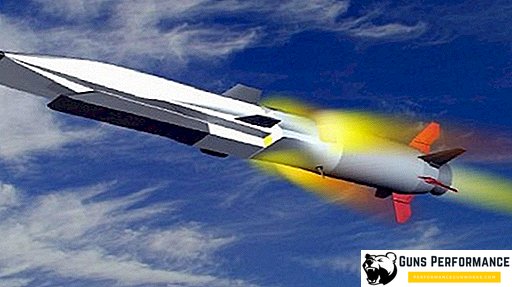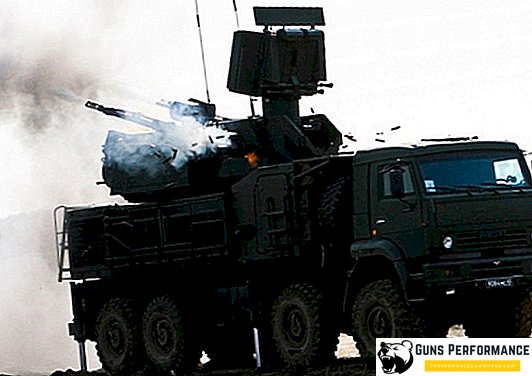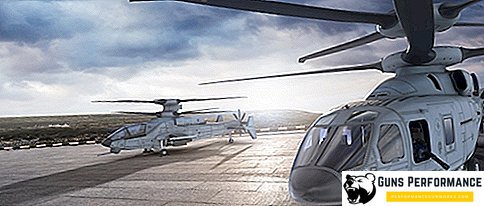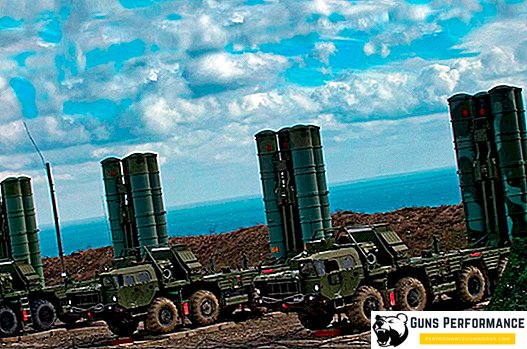At the end of last month, there was information about the successful testing in the US of an electromagnetic gun (railgun), we have this development called railgun. An article about this was published by the highly respected publication The Wall Street Journal, posting video on it with tests of the electromagnetic gun. The development of this weapon involved the corporations General Atomics and BAE Systems. The Americans have already said that these weapons, once finalized, will lead to a real revolution in military affairs and will be able to protect US allies from the encroachments of China and Russia.

This news caused a huge resonance in the Russian press. Patriotic media broke out in a whole stream of materials that can be combined into two large groups: "the Americans are again shamelessly sawing the military budget" and "the Russian railgun will still be better." However, let us try to calmly understand what this technology really is and what its potential is. Are there any prospects for a new weapon, is it really a revolutionary breakthrough?
What is a railgun electromagnetic gun?
A railgun is a system that uses an electromagnetic field to speed up a projectile. A shell made of a material conducting the current, accelerates between two guides (rails), which are connected to a powerful source of direct current. The strength of the current is such that a plasma arc is formed between the rails.
For almost a thousand years mankind has been familiar with gunpowder and uses the energy of burning powder gases for throwing various projectiles at very decent distances. Why make a fuss and throw billions of dollars on strange electromagnetic guns?
The fact is that today we have almost reached the limit of the possibility of gunpowder. He is no longer able to accelerate the projectile to a speed above 2.5 km / second. It became clear a long time ago, the search for weapon systems built on other physical principles has been going on for many decades.

Another problem associated with the traditional artillery, is the resource of gun barrels. When fired they are under enormous pressure. Naturally, modern metallurgy offers designers materials with great potential and resources, they can not be compared with what was a hundred or even fifty years ago. But here we come to the limit.
The physical principle on which the railgun is based is extremely simple: the projectile closes the electrical circuit and moves forward thanks to the power of Laurentz. These physical laws are studied by children in a school physics course. However, to translate them into reality turned out to be very difficult. It is all about materials and technologies and, of course, energy sources, which need so much for one shot that it is enough to cover a small city.
What is the strength of the railgun?
What advantages will the armed forces possess in their arsenal of railguns? There are several of them, and they are really impressive. Here is the complete list:
- high speed, and hence the destructive force of the projectile;
- significant firing range;
- relatively low cost per shot;
- higher safety of the railgun due to the lack of gunpowder;
- more ammunition, compared with rocket weapons.
Let's go through all the above points.
One of the drawbacks of the traditional artillery system is the fact that the projectile gains momentum only immediately after the explosion of gunpowder. That is, the time of its dispersal is very small. Railgun accelerates the projectile over the entire length of the guides, so it can get a monstrous acceleration reaching 60 G. This parameter determines the remaining "breakthrough" characteristics of this weapon.
The speed of the projectile, departing from a similar electromagnetic gun, can reach 6-8 Mach, which allows you to hit targets at distances up to 400 km. When firing direct fire (8-9 km), it is not necessary to consider corrections, to make anticipations - the projectile from the railgun overcomes this distance in less than a second. Dodge it is impossible.

Such a projectile does not need an explosive, the destruction of objects occurs due to its kinetic energy. The Russian experimental model of the railgun dispersed a three-gram projectile to a speed of 6 km / s, which made it possible to evaporate the steel sheet target.
Another important advantage of such weapons is the low cost per shot. Today it is about 25 thousand dollars. Compared to modern guided missiles, some of which have a price tag of $ 10 million, they are real pennies.
Railgun shells are small in size, which significantly increases ammunition. A modern American ship with a hundred missiles may well carry several thousand rounds for a railgun on board.
Such a system does not incorporate explosive substances (gunpowder or rocket fuel), which significantly increases the security of military facilities.

Unsolved problems of electromagnetic guns
If this type of weapon is so deadly, why is it still not in service with any of the armies of the world? Railgun is really a very promising weapon, but to begin its practical application, developers need to solve many of the most complex technical problems.
The project of an electromagnetic gun was first proposed during the First World War, in honor of its creator it was called the “Gauss gun”. For obvious reasons, this project remained on paper.
The first railgun was built by scientists at the University of Australia in the 70s, it was used for purely scientific purposes. They built similar installations in the Soviet Union. However, the military was not too interested in models that fired bullets weighing a few grams, they needed a more powerful installation. The developers of the Star Wars program at the time of President Reagan thought about the railgun, with his help they wanted to shoot down Soviet warheads. But the materials and technologies of that time were such that the barrel of the gun could only be used once, then a new one must be put. And this is the first most serious problem that today faces the developers of the railgun. Just imagine for a moment what is happening inside this gun: huge energies, plasma flows, gigantic projectile speeds.

Today, the Americans claim that the barrel of the prototype, which they are experiencing, can survive a thousand shots. The ideal weapon would be at a rate of 5-6 shots per minute and at a barrel resource of several thousand shots.
No less a problem is the heat sink, as well as the normal operation of the power plant. There are also problems with the integration of weapons into the onboard energy system.
The power supply for the railgun is a huge battery of capacitors capable of delivering a short and powerful pulse, as well as hundreds of cables transferring this charge.
In 2012, the prototype was tested at a capacity of 32 megajoules, and in the future (until 2025), developers are planning to double the capacity.
However, these issues are not the most important, the problem of the possibility of controlling the railgun's projectile in flight, that is, increasing its accuracy, is more relevant.

Americans say they can already control a projectile fired from a railgun. It is a question of both remote control (radio waves) and self-government.
Last year, the developers of railgun (General Atomics Electromagnetic Systems) stated that the projectile with electronic filling not only survived the tests, but also successfully fulfilled its functions.
If this is true (there is no reason to believe), then the Americans managed to create such an electronic control system that can withstand monstrous accelerations, plasma and electromagnetic field with a huge voltage, as well as heating the surface of the projectile to several hundred degrees.
In this case, the railgun can really become a breakthrough in military affairs. So far, the sea, because the installation with such dimensions and power consumption can hardly be used otherwise.
The Americans plan to launch several destroyers of the Zumwalt class by 2020, which were designed to install advanced types of electromagnetic weapons, primarily railguns.

Railgun perspectives
If the developers are able to solve the last difficulties, then we can witness the beginning of a new era: the era of the revival of artillery. The era of the battleships with their huge guns has sunk into oblivion because of their small radius of combat defeat. They were forced out by aircraft carriers and rocket ships. And what will happen if the artillery guns will be able to shoot at 300-400 km with high accuracy?
It is likely that this technology will completely change the fighting at sea.
On land, railguns can be used as part of a missile defense system. They are also perfect for protecting ships against enemy cruise missiles.

Huge speed and low cost will allow to destroy even the enemy nuclear warheads.
General Atomics has already stated that it is currently developing a ground-based railgun, but here everything depends on power sources.
Many experts believe that electromagnetic guns (railguns), solid-state lasers and hypersonic ammunition are the most promising areas of weapons development at the present time. If even one of them is brought to mind, it will be a real breakthrough, and the beginning of the practical application of two technologies at once will lead to a revolution.













